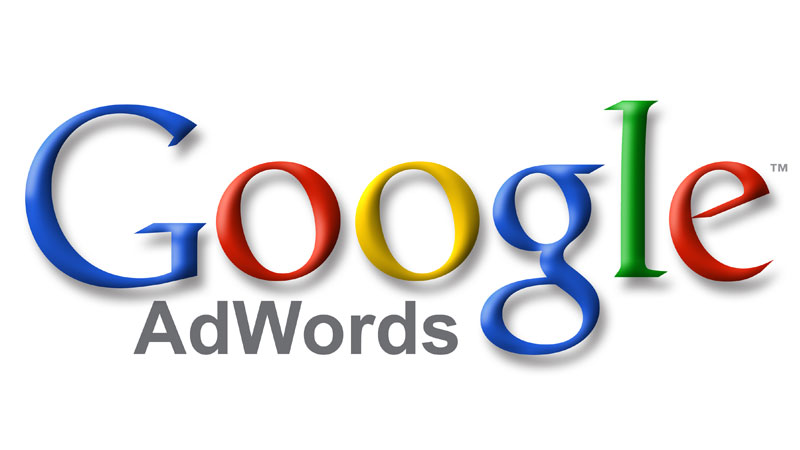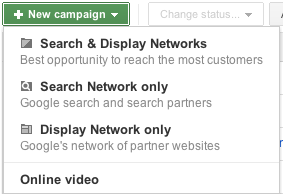
Top 7 AdWords Tips and Tricks For Beginners
AdWords can easily be compared to a Rubix cube. It can be maddening, complicated, and frustrating. But, when all the colors align, it’s very rewarding.
These 7 AdWords tips and tricks will help provide a beacon of light at the end of the tunnel for a beginner advertiser. We will outline some best practices when setting up and managing an effective AdWords campaign.
Follow these tips and tricks inside AdWords and it won’t be long until that puzzling Rubix cube starts to show its true colors.
AdWords Tip 1.) Essential Settings
There are several best practices that should be taken care of right out of the gate in your campaign settings.
- Networks: Choose One!
- Choose either search or display. You should never target both simultaneously. The audiences associated with each network act and respond differently to your advertisements, so it’s important to segment your targeting accordingly.

- Devices: Save with mobile!
- Mobile traffic tends to be exponentially cheaper than traffic driven from a desktop. If you receive substantial mobile traffic, it’s important to pull mobile targeting into its own campaign. This way you can control your bids and budgets to ensure you’re using mobile efficiently and not wasting money on clicks.

- Rotation Settings: Split test the right way!
- It’s important to always start your campaigns off by rotating your ads evenly. This way you can ensure that you get baseline data for each ad you’re running. If you immediately optimize for clicks/conversions, AdWords will quickly decide which ad it likes best and show it to 90+% of your audience leaving your other ads untested.

AdWords Tip 2.) Themes, Themes, Themes!
If there’s one thing that AdWords loves, its themes, and not just general themes, very tight, specific themes. The closer in relation your adgroups, keywords and ads are to one another, the better they’re going to perform.
What does this mean for account structure? Everything!
Let’s use an example of an advertiser trying to advertise shoes.
“Shoes” is a very broad term. We’re potentially dealing with tennis shoes, basketball shoes, heels, dress shoes, loafers, sandals, etc. This type of account should be set up like the following:
Campaign: Shoes
Adgroups: Basketball, Tennis, Cleats, Sandals, etc.
Then, within each adgroup, your keywords would be equally as specific as these adgroups.
If we use our “Basketball” adgroup, the keywords would resemble the following:
- Basketball shoes
- Shoes for basketball
- Etc.
After your keywords have been selected, you can customize the ads to meet the theme as well. This is done by using your keywords in the ad copy so the user can see their search query bolded in the SERPs (which may lead to higher click through rates, lower CPCs, and better quality scores).
AdWords Tip 3.) Utilize PPC Specific Landing Pages
One of the most important things that can be done as an advertiser on AdWords is the use of PPC specific landing pages.
This is a continuation of the “theming“ we mentioned earlier. You’ve already got your user interested in shoes (our basketball shoes to be exact), so why on earth would you send them to a generic homepage?
Right! You wouldn’t!
You’d send them to a page that had a place to purchase, read about or even just stare at basketball shoes. Leading the user down a path such as this greatly increases the chances they’re going to convert. They know what to expect when clicking the ad and are not disappointed upon arrival.
AdWords Tip 4.) Varied Keyword Bidding
So now we know about themes and the importance of leading our users down a specific path. Now, let’s talk about paying for them.
In the keywords section of AdWords, we have 3 match types to experiment with: broad, phrase and exact. First, we know that broad is going to give us the largest volume of visits, but may not be the most relevant. We also know that phrase will give us slightly less volume but the traffic will be more relevant than that of broad. Finally, we know that exact match is going to give us the least amount of traffic, but that traffic will be the most relevant because they’re searching for exactly what you’re selling.
So, let’s take advantage of this knowledge!
Since exact is going to give us the best traffic, you should bid higher on all our exact keywords, slightly less on phrase, and the least on broad. This way you’re still capturing volume from all three match types, but you’re ensuring that the ads show more prominently for keywords that are more likely to convert.
AdWords Tip 5.) Position Points Are King
There is a very common misconception that the top spot on the SERPs is always the best for PPC.
“If I’m #1, everyone will always think I’m the best!”
– Said no advertiser ever
There are occasions where being in the #1 spot on the SERPs is the most cost effective but that is true (probably) less than 5% of the time.
More often, you’re able to lower your bids (and subsequently your positions) and receive more conversions at a lower cost. Take some time to play around with positions to see where your conversion rate is at its highest. This could be the test missing from your campaign and could result in you being able to substantially slash your CPAs.
AdWords Tip 6.) The Dimensions Tab Is Your Friend
The dimensions tab is often one of the most neglected tabs in the AdWords interface.
The dimensions tab is often where you can find some of your greatest opportunities!
For example, you can look in dimensions and see that you’ve NEVER received a conversion between 7PM and 7AM but you’ve spent 15% of your monthly spend during that time. This information allows you to go into settings and schedule your ads to stop running for those times and will save that 15% of monthly spend for a time of day when your ads convert.
This can be done with geography, day of the week, destination URLs, and so much more. Dimensions can help you really zero in on when and where your users are most likely to convert and with that information you can help your account reach staggering efficiency.
AdWords Tip 7.) Never Stop Testing
Our last AdWords tip is very simple, Never Stop Testing!
The markets are always changing and so is the behavior of our users. As an advertiser, you cannot become complacent. If you fall behind the times, so will your AdWords account’s performance.
It’s important to always be testing new keywords, new ad copy, new landing pages, etc. to ensure that your account is always performing at its optimal rate.
Results come to those who work and by following these 7 tips and tricks, you can help to ensure that, that mosaic Rubix cube of yours reveals its true colors.
Most newsletters suck...
So while we technically have to call this a daily newsletter so people know what it is, it's anything but.
You won't find any 'industry standards' or 'guru best practices' here - only the real stuff that actually moves the needle.







